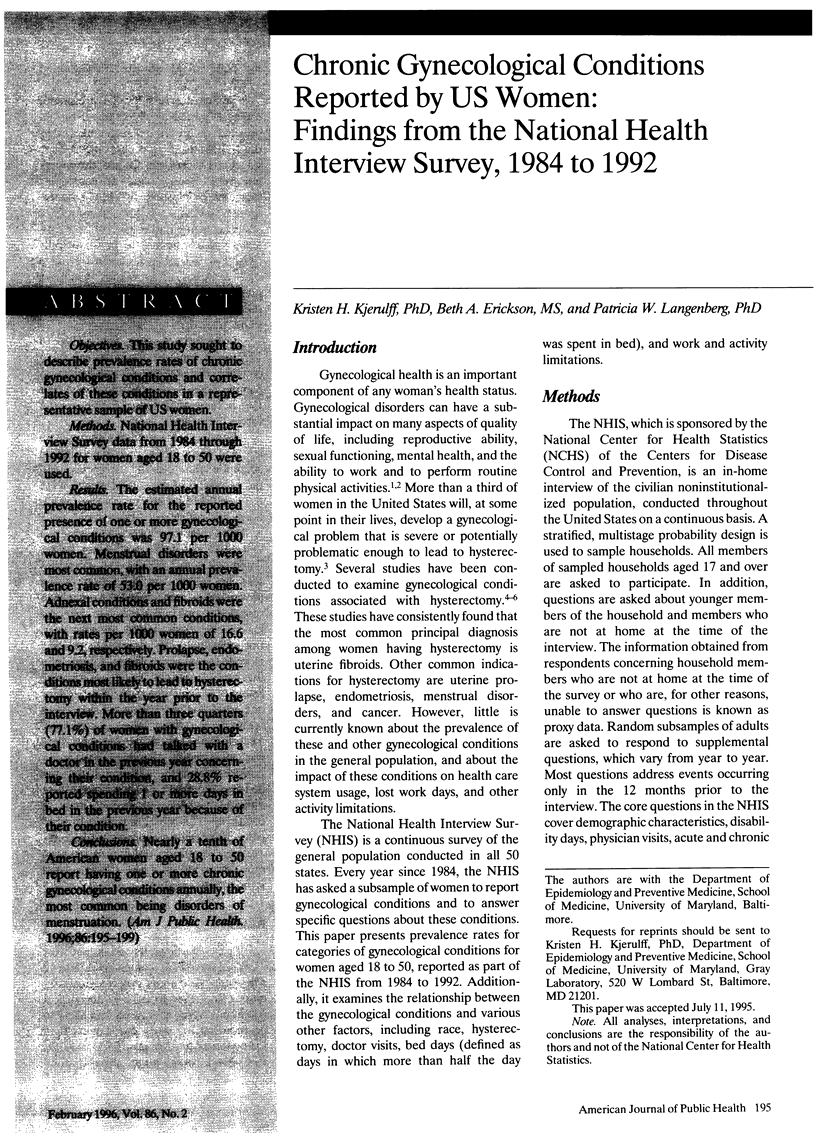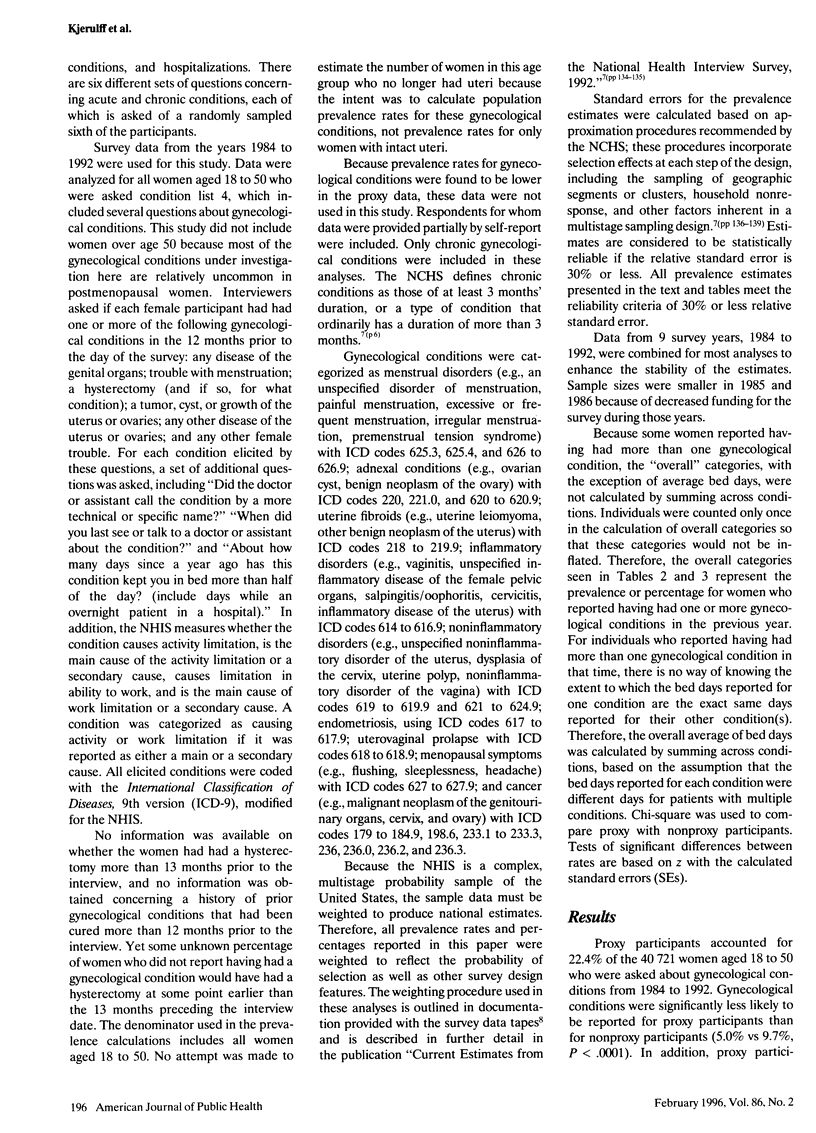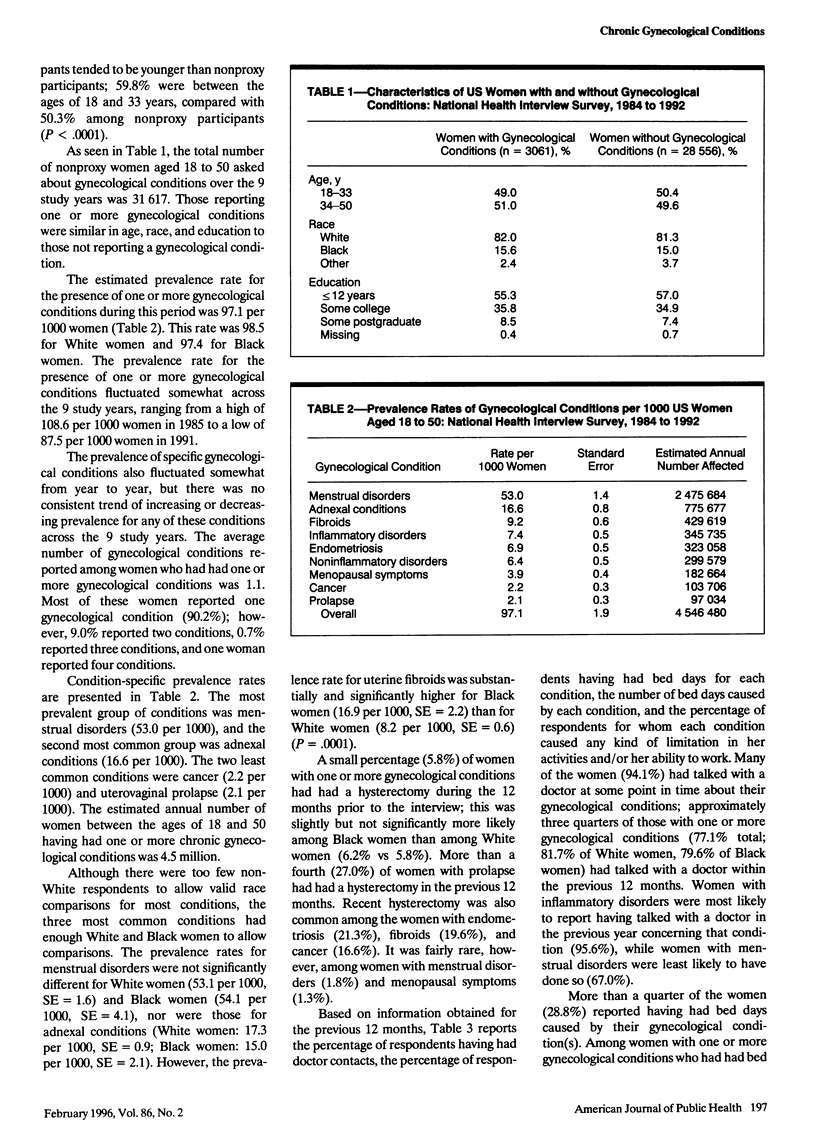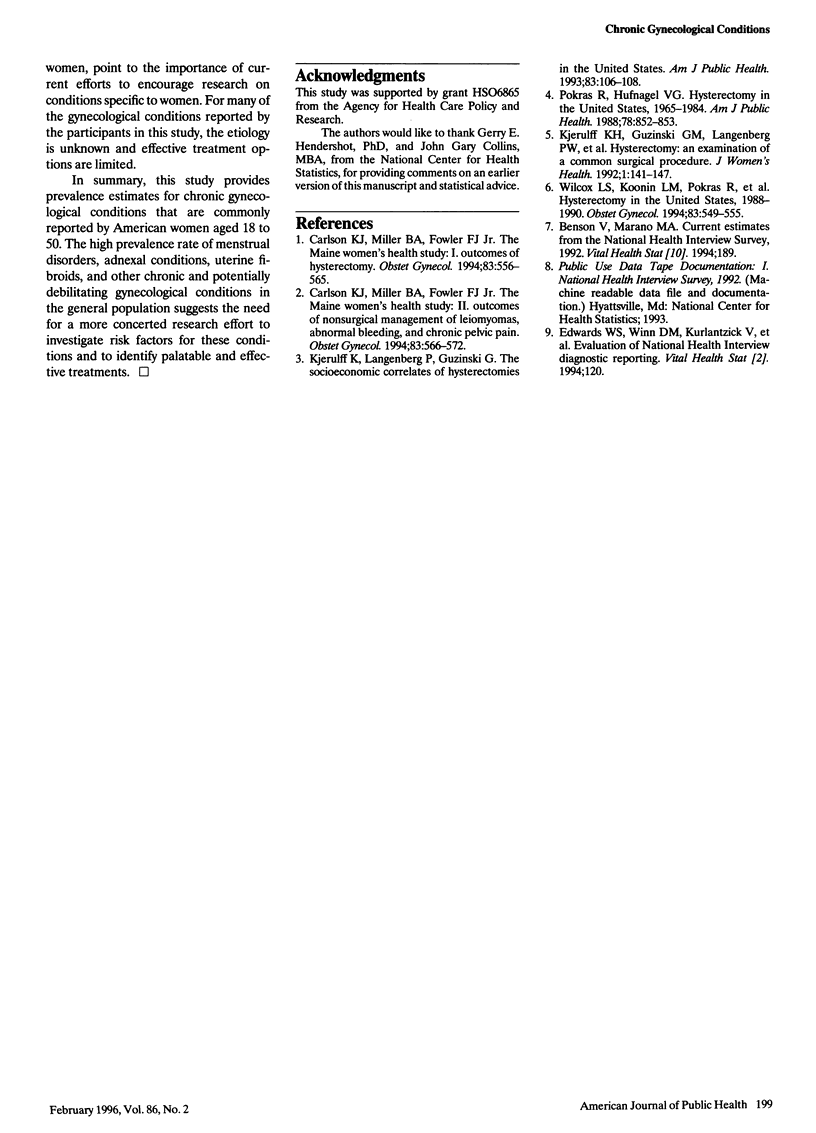Abstract
OBJECTIVES. This study sought to describe prevalence rates of chronic gynecological conditions and correlates of these conditions in a representative sample of US women. METHODS. National Health Interview Survey data from 1984 through 1992 for women aged 18 to 50 were used. RESULTS. The estimated annual prevalence rate for the reported presence of one or more gynecological conditions was 97.1 per 1,000 women. Menstrual disorders were most common, with an annual prevalence rate of 53.0 per 1,000 women. Adnexal conditions and fibroids were the next most common conditions, with rates per 1,000 women of 16.6 and 9.2, respectively. Prolapse, endometriosis, and fibroids were the conditions most likely to lead to hysterectomy within the year prior to the interview. More than three quarters (77.1%) of women with gynecological conditions had talked with a doctor in the previous year concerning their condition, and 28.8% reported spending 1 or more days in bed in the previous year because of their condition. CONCLUSIONS. Nearly a tenth of American women aged 18 to 50 report having one or more chronic gynecological conditions annually, the most common being disorders of menstruation.
Full text
PDF




Selected References
These references are in PubMed. This may not be the complete list of references from this article.
- Carlson K. J., Miller B. A., Fowler F. J., Jr The Maine Women's Health Study: I. Outcomes of hysterectomy. Obstet Gynecol. 1994 Apr;83(4):556–565. doi: 10.1097/00006250-199404000-00012. [DOI] [PubMed] [Google Scholar]
- Carlson K. J., Miller B. A., Fowler F. J., Jr The Maine Women's Health Study: II. Outcomes of nonsurgical management of leiomyomas, abnormal bleeding, and chronic pelvic pain. Obstet Gynecol. 1994 Apr;83(4):566–572. doi: 10.1097/00006250-199404000-00013. [DOI] [PubMed] [Google Scholar]
- Kjerulff K., Langenberg P., Guzinski G. The socioeconomic correlates of hysterectomies in the United States. Am J Public Health. 1993 Jan;83(1):106–108. doi: 10.2105/ajph.83.1.106. [DOI] [PMC free article] [PubMed] [Google Scholar]
- Pokras R., Hufnagel V. G. Hysterectomy in the United States, 1965-84. Am J Public Health. 1988 Jul;78(7):852–853. doi: 10.2105/ajph.78.7.852. [DOI] [PMC free article] [PubMed] [Google Scholar]
- Wilcox L. S., Koonin L. M., Pokras R., Strauss L. T., Xia Z., Peterson H. B. Hysterectomy in the United States, 1988-1990. Obstet Gynecol. 1994 Apr;83(4):549–555. doi: 10.1097/00006250-199404000-00011. [DOI] [PubMed] [Google Scholar]


